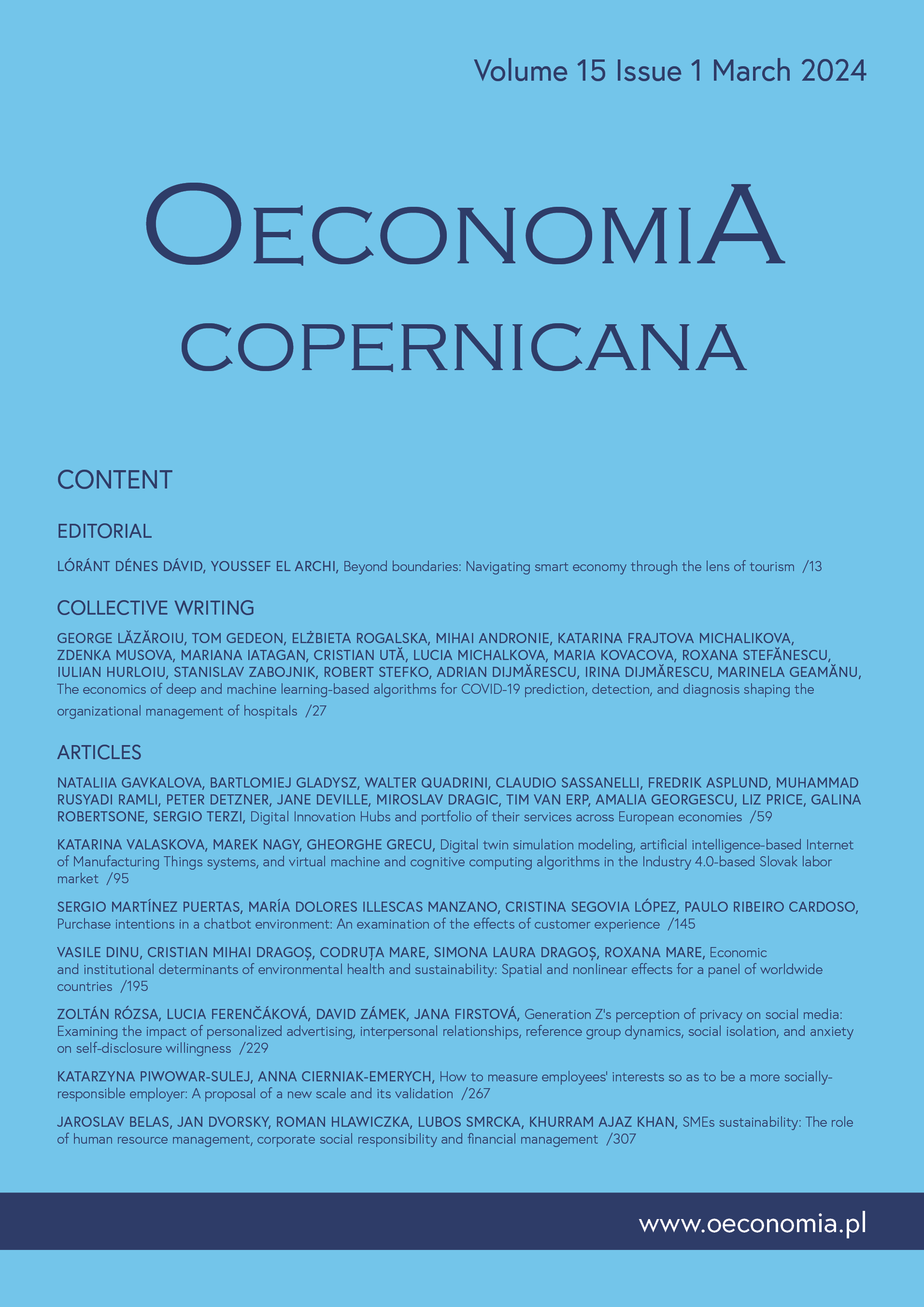The economics of deep and machine learning-based algorithms for COVID-19 prediction, detection, and diagnosis shaping the organizational management of hospitals
The economics of deep and machine learning-based algorithms for COVID-19 prediction, detection, and diagnosis shaping the organizational management of hospitals
Author(s): George Lăzăroiu, Tom Gedeon, Elżbieta Rogalska, Mihai Andronie, Katarina Frajtova Michalikova, Zdenka Musová, Mariana Iatagan, Cristian Uță, Lucia Michalkova, Mária Kováčová, Roxana Ștefănescu, Iulian Hurloiu, Stanislav Zábojník, Róbert Štefko, Adrian Dijmărescu, Irina Dijmărescu, Marinela GeamănuSubject(s): Health and medicine and law
Published by: Instytut Badań Gospodarczych
Keywords: deep and machine learning; COVID 19; prediction; detection; diagnosis; organizational management; hospital;
Summary/Abstract: Research background: Deep and machine learning-based algorithms can assist in COVID-19 image-based medical diagnosis and symptom tracing, optimize intensive care unit admission, and use clinical data to determine patient prioritization and mortality risk, being pivotal in qualitative care provision, reducing medical errors, and increasing patient survival rates, thus diminishing the massive healthcare system burden in relation to severe COVID-19 inpatient stay duration, while increasing operational costs throughout the organizational management of hospitals. Data-driven financial and scenario-based contingency planning, predictive mod- elling tools, and risk pooling mechanisms should be deployed for additional medical equip- ment and unforeseen healthcare demand expenses. Purpose of the article: We show that deep and machine learning-based and clinical decision making systems can optimize patient survival likelihood and treatment outcomes with regard to susceptible, infected, and recovered individuals, performing accurate analyses by data modeling based on vital and clinical signs, surveillance data, and infection-related biomarkers, and furthering hospital facility optimization in terms of intensive care unit bed allocation. Methods: The review software systems employed for article screening and quality evaluation were: AMSTAR, AXIS, DistillerSR, Eppi-Reviewer, MMAT, PICO Portal, Rayyan, ROBIS, and SRDR. Findings & value added: Deep and machine learning-based clinical decision support tools can forecast COVID-19 spread, confirmed cases, and infection and mortality rates for data-driven appropriate treatment and resource allocations in effective therapeutic and diagnosis protocol development, by determining suitable measures and regulations and by using symptoms and comorbidities, vital signs, clinical and laboratory data and medical records across intensive care units, impacting the healthcare financing infrastructure. As a result of heightened use of personal protective equipment, hospital pharmacy and medication, outpatient treatment, and medical supplies, revenue loss and financial vulnerability occur, also due to expenses related to hiring additional staff and to critical resource expenditures. Hospital costs for COVID-19 medical care, screening, treatment capacity expansion, and personal protective equipment can lead to further financial losses while affecting COVID-19 frontline hospital workers and patients.
Journal: Oeconomia Copernicana
- Issue Year: 15/2024
- Issue No: 1
- Page Range: 27-58
- Page Count: 32
- Language: English

